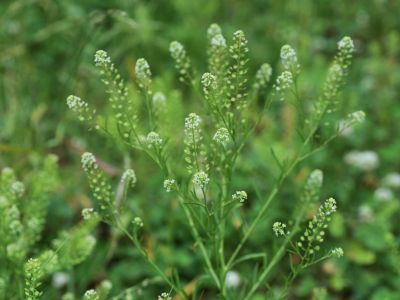What is Peppergrass?
Peppergrass is an annual, or winter annual, that will grow in most climates. It can thrive in many types of soil, in full sun to partial shade. It is often found in disturbed ground and in urban areas, like vacant lots and roadsides. The plant can grow to three feet (1 m.) in height and become bushy when it has no other competition. It starts out as a low-growing rosette that bolts upward rapidly to form long, thin leaves, small white flowers, and seed pods. Growing peppergrass plants is very easy, as they reseed themselves and tend to spread to places they’re not wanted. In fact, peppergrass management is usually more difficult and more important than peppergrass care. That said, it does have a useful place in the garden… with careful maintenance.
How to Grow Peppergrass in Gardens
Also called poor man’s pepper, peppergrass is part of the mustard family and has a distinct and pleasant spicy flavor. All parts of the plant are edible, and peppergrass uses have a wide range. The leaves can be eaten raw or used in cooking the way arugula or other mustard greens would be. The seeds can be ground up and used in the same way pepper is used. Even the roots can be pulverized and mixed with salt and vinegar for a very good horseradish alternative. When growing peppergrass plants, remove most of the flowers before the seed pods have a chance to drop. This will ensure that some new plants grow in the spring, but they won’t overrun your garden.
